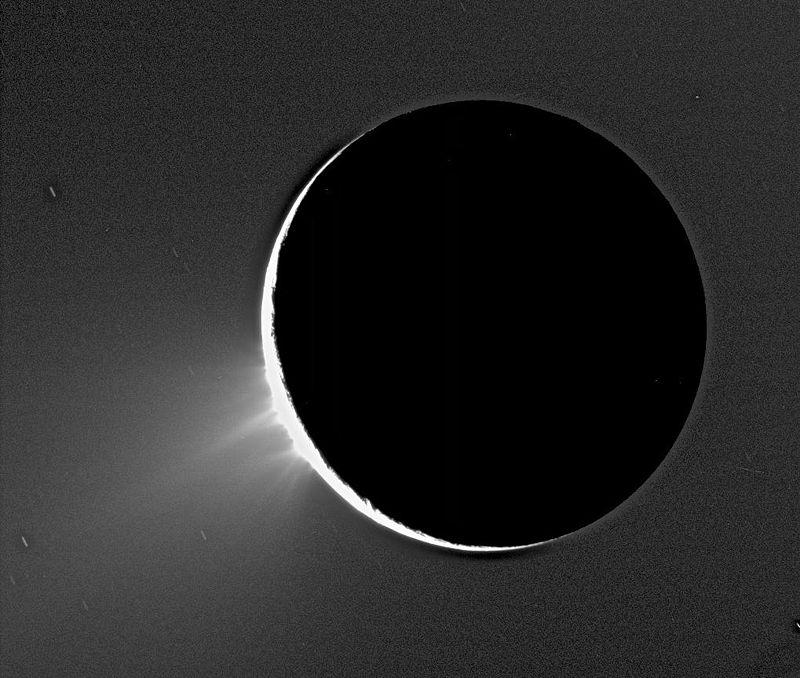Image: Fountains on Enceladus; Credit: NASA/JPL/Space Science Institute
Hawaii, Iceland, Tenerife, Sicily, the Philippines’ province of Albay… What do all these places have in common? Volcanoes, of course! But the Earth is not the only body in the Solar System where volcanic activity is known to take place today. Or to have taken place in the past. There are other volcanic worlds out there! Interestingly, not all Solar System volcanoes are born equal. While some spit out ‘the usual stuff’, molten rock and ash, others erupt frozen water, ammonia and methane. Those are cryovolcanoes, or ice volcanoes as scientists lovingly call them.
Until recently we didn’t think they were possible. But now we find evidence of the past and present cryovolcanism on many of the Solar System’s icy moons and dwarf planets.
Active or extinct?
The volcanic activity used to be much more common in the early Solar System when the newly formed planets and moons were much hotter than they are today. How many of the Solar System volcanoes are still rumbling? It is hard to tell. To confirm the recent eruption event scientists need to either catch a culprit in action or to spot some resurfacing caused by the eruption. Naturally, neither is an easy task. There are most likely many volcanoes out there – both active and extinct – that we still don’t know about.
Discoveries
The first confirmation of the existence of the cryovolcanism came in 1989 from NASA’s Voyager 2. When the spacecraft flew past Neptune’s biggest moon Triton, it witnessed (and photographed) several cryovolcanic eruptions.
Later, in 2005, Cassini spacecraft took pictures of the plumes of frozen water dashing out from the surface of Saturn’s icy moon Enceladus.
In 2015 New Horizons spacecraft spotted several features on the surface of Pluto that resemble volcanic structures here on Earth.
Similar features were found in 2018 on the images of another dwarf planet, Ceres, taken by the now-retired Dawn spacecraft.
Many other Solar System worlds are suspected to have ice volcanoes. Pluto’s largest moon Charon, Uranus’ innermost moon Miranda, Saturn’s moons Titan…and probably many others! Still, none of them beats Jupiter’s moon Io, home to several hundreds active volcanoes.
The engines of the frozen volcanoes
The mechanism of the lava volcano eruptions here on the Earth [and, by extent, on the rocky worlds like Mercury, Mars, Venus and the Moon] is well understood. When some of the mantle melts, for instance, when one tectonic plate moves under the other, magma is formed. Magma is less dense than the surrounding rock, therefore it rises to the surface and… Houston, we have an eruption!
Similarly, cryovolcanism occurs because of the presence of pockets of liquid that act just like magma on Earth. Only… how can anything stay liquid on an icy body where surface temperature doesn’t rise above minus several hundred degrees Celsius? Scientists have several hypotheses. One, and that’s probably what is happening on Enceladus, is tidal flexing caused by the pull of a parent planet. Another, this might be the case with Pluto, is radioactive decay. Finally, some primordial heat left over from the formation of a cryovolcanic world might still be there, preventing the subsurface liquid from freezing over.
There is still so much we don’t understand about ice volcanoes. The fact that the phenomenon does not have a direct analog on our planet makes studying them more challenging. But also more interesting.
Ice volcanoes and aliens
When an ice volcano erupts, the ‘stuff’ from the inner layers makes its way right to the surface. Therefore cryovolcanism gives us an opportunity to study the interiors of these bodies without having to dig in. Out of all the places where the ice volcanoes erupt we are particularly interested in those that have the right ingredients for life. All we need to do is to send a probe to fly through their plumes – and voila – we can study the chemical environment and explore the habitability of these places straight away.
In fact, we’ve done so already when NASA Cassini spacecraft flew through the plume rising above the frozen surface of Saturn’s moon Enceladus. Europa Clipper, another NASA mission, currently in development, will take advantage of the same idea to explore the interiors of Jupiter’s moon Europa. Many others might follow. How exciting is that?
Would you like to learn more about the Solar System’s planets and moons? Visit our portable planetarium to fly past your favourite planets, land on some of the Solar System moons and even search for aliens! For more details on Prices and Booking please visit our web site http://wonderdome.co.uk.

